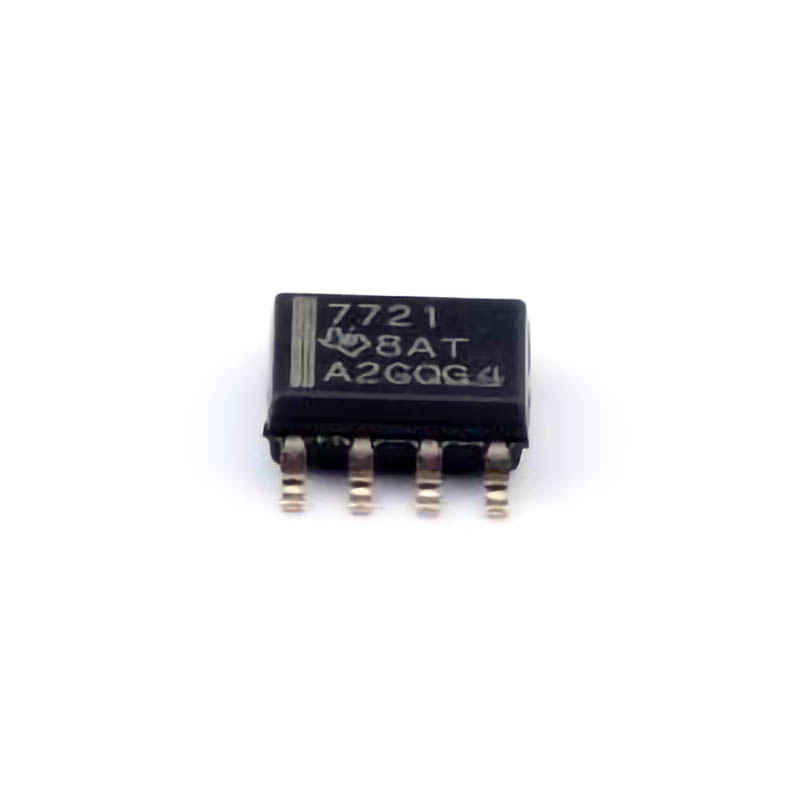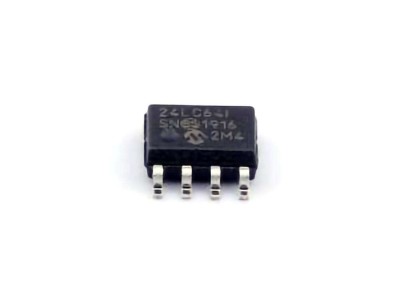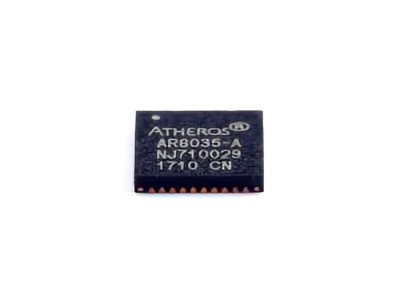
The Evolution of Signal Isolation and the Role of ISO7721DR in Dual-Channel Design
Signal isolation is crucial in the design of modern electronic systems, particularly when those systems are deployed in environments with high electromagnetic interference ( EMI ), voltage spikes, and other disruptive electrical phenomena. Proper isolation not only prevents damage to sensitive components but also ensures signal integrity and optimal system performance. In this context, the ISO7721DR, an innovative dual-channel isolator from Texas Instruments, plays a vital role in enhancing the safety and efficiency of industrial, automotive, and Communication systems.
What is ISO7721DR?
The ISO7721DR is a digital isolator featuring two independent channels, designed to provide high-quality electrical isolation between two circuits. Operating over a wide voltage range and supporting a high level of immunity to noise, the ISO7721DR is particularly valuable in systems where signal integrity is paramount, and where interference could otherwise compromise functionality.
This isolator uses a capacitive-based isolation technology, enabling high-speed signal transfer while maintaining effective electrical isolation. The ISO7721DR can be deployed in both high-speed data communications and high-voltage environments, making it a versatile component for industrial applications. It provides 5000 Vrms isolation between channels, which is crucial for protecting sensitive components in complex systems.
Key Features of ISO7721DR
Some of the key features that make the ISO7721DR an ideal solution for dual-channel isolation include:
High Voltage Isolation: The ISO7721DR ensures up to 5000 Vrms of isolation, which is important for protecting circuits from dangerous high-voltage surges.
Low Propagation Delay: It has a fast switching time, minimizing signal delay, which is essential in high-speed data transmission applications.
Wide Temperature Range: With a temperature range of -40°C to +125°C, the ISO7721DR is suitable for use in a variety of demanding environments.
Low Power Consumption: This isolator consumes minimal power, which contributes to the overall efficiency of the system in which it is integrated.
Dual-Channel Operation: This design enables independent isolation between two different signals, improving flexibility and robustness in circuit design.
These features make the ISO7721DR ideal for applications where reliability, speed, and electrical protection are of utmost importance.
Importance of Dual-Channel Isolation in Modern Designs
The implementation of dual-channel isolation significantly enhances the performance and safety of electrical systems. In most systems, signals from different parts of the circuit may need to be isolated from each other to avoid interference or damage. Dual-channel isolators, like the ISO7721DR, are particularly useful because they allow independent isolation of two signals without requiring additional components, thereby saving space and cost while improving performance.
For instance, in industrial automation systems, a single isolator can be used to separate the control signals of different sections of machinery or sensors, thereby protecting each circuit from potential disturbances. Similarly, in automotive systems, where complex signal processing and high voltages are common, dual-channel isolators ensure that vital signals from sensors or communication module s are isolated without compromising the system’s efficiency.
Applications in Industrial Automation
One of the key areas where the ISO7721DR shines is in industrial automation. In factory automation, robotics, and industrial control systems, the ability to transfer signals reliably and securely between different sections of a plant is critical. The ISO7721DR, with its robust isolation and fast signal transmission capabilities, ensures that even in noisy and harsh environments, the system can operate smoothly without interference.
For example, in motor control applications, where feedback signals from sensors need to be isolated from the controller, the ISO7721DR can help ensure the accuracy of the data being transmitted. Similarly, in sensor-to-controller communication, this isolator helps protect sensitive control electronics from potentially damaging voltage spikes that could arise from transient signals or from the heavy machinery in the plant.
By ensuring reliable data transfer between devices and preventing electrical damage to sensitive circuits, dual-channel isolators such as the ISO7721DR enhance system reliability, uptime, and overall performance.
ISO7721DR in Automotive Electronics
The automotive sector is another area that benefits from the dual-channel isolation capabilities of the ISO7721DR. Modern vehicles are becoming more reliant on electronic systems for a wide range of functions, from engine control to infotainment and advanced driver-assistance systems (ADAS). These systems are subjected to significant electrical noise from the engine, alternators, and other high-power components.
By using the ISO7721DR to isolate critical signals—such as those between microcontrollers, sensors, and communication modules—automotive manufacturers can reduce the risk of electrical interference, enhance signal clarity, and protect circuits from high-voltage spikes. Additionally, the high-temperature tolerance of the ISO7721DR makes it suitable for under-the-hood applications, where extreme temperature fluctuations are common.
Telecom munications and Data Communication
In telecommunications, where signal clarity is vital for effective data transmission, the ISO7721DR is used to ensure that data from different channels remain free from interference. By providing high-speed isolation between components, it guarantees that communication signals are transmitted accurately, ensuring high-quality voice, video, and data transfers. Its low latency and high-frequency capabilities make it a preferred choice in high-speed networks, where even small disturbances can cause significant disruptions.
Design Considerations and Future Trends in Dual-Channel Isolator Technology
While the ISO7721DR provides exceptional isolation and signal quality, its effectiveness also depends on how it is integrated within a system. Proper circuit design, component selection, and careful layout all contribute to achieving optimal performance from the isolator.
Design Considerations for Integrating ISO7721DR
When designing systems with the ISO7721DR, engineers must consider several factors:
PCB Layout: The layout of the PCB (Printed Circuit Board) is critical to ensuring that the isolator performs effectively. Signal paths should be kept as short as possible to minimize transmission loss and delay. Additionally, care should be taken to separate high-voltage and low-voltage areas to maintain proper isolation.
Power Supply Design: The ISO7721DR’s power supply must be carefully designed to ensure stable operation. Since it operates at low power, engineers need to ensure that the isolator is supplied with the correct voltage levels to maintain its performance.
Thermal Management : While the ISO7721DR is designed to work in harsh temperature conditions, proper heat dissipation should still be considered, particularly in high-power systems. Engineers should ensure that components are adequately cooled to prevent overheating.
Protection against Voltage Spikes: In high-voltage applications, additional protection elements like TVS diodes (Transient Voltage Suppressors) should be used alongside the ISO7721DR to prevent potential damage caused by unexpected voltage surges.
Signal Integrity and EMI Mitigation: Proper shielding and grounding techniques should be implemented to minimize EMI (Electromagnetic Interference) and ensure that the signals remain clean and free of noise during transmission.
Challenges and Solutions in Dual-Channel Isolator Design
While dual-channel isolators provide significant advantages, designing systems that fully leverage their potential can present certain challenges. Some of these challenges include managing the complexity of routing multiple signal paths and ensuring that both channels remain isolated without introducing interference. In some cases, integrating multiple isolators might be necessary to manage more signals, which can increase system complexity.
To address these challenges, manufacturers like Texas Instruments provide detailed application notes, reference designs, and simulation tools to help engineers optimize the integration process. By carefully following these guidelines and utilizing available resources, engineers can mitigate the complexities and reap the benefits of dual-channel isolation.
The Future of Dual-Channel Isolation Technology
The future of dual-channel isolators, such as the ISO7721DR, is poised for further innovation. As industries continue to demand higher performance, lower latency, and more compact designs, isolator technology will evolve to meet these needs. Key trends expected to shape the future of dual-channel isolators include:
Higher Speed and Bandwidth: As data rates in communication systems continue to rise, isolators will need to support even higher speeds without sacrificing signal integrity.
Smarter Integration: Future isolators may integrate additional features such as on-chip diagnostic capabilities, self-monitoring, and fault detection, providing engineers with real-time feedback on the health of the system.
Smaller Form Factors: As miniaturization continues across electronics, dual-channel isolators are likely to become even smaller while maintaining or improving their performance.
Enhanced EMI Immunity: With the increasing presence of noise in industrial and automotive systems, future isolators will likely feature enhanced EMI immunity, enabling more robust operation in even the noisiest environments.
Conclusion
The ISO7721DR is a game-changing component in the field of dual-channel isolator design, offering superior performance, protection, and flexibility in a wide range of applications. From industrial automation to automotive electronics, telecommunications, and beyond, its features ensure that systems operate reliably, efficiently, and safely.
As the demand for more advanced and integrated solutions continues to rise, the ISO7721DR stands out as a key enabler of innovation in signal isolation, providing engineers with the tools they need to design cutting-edge systems that push the boundaries of performance and safety.
If you are looking for more information on commonly used Electronic Components Models or about Electronic Components Product Catalog datasheets, compile all purchasing and CAD information into one place.


